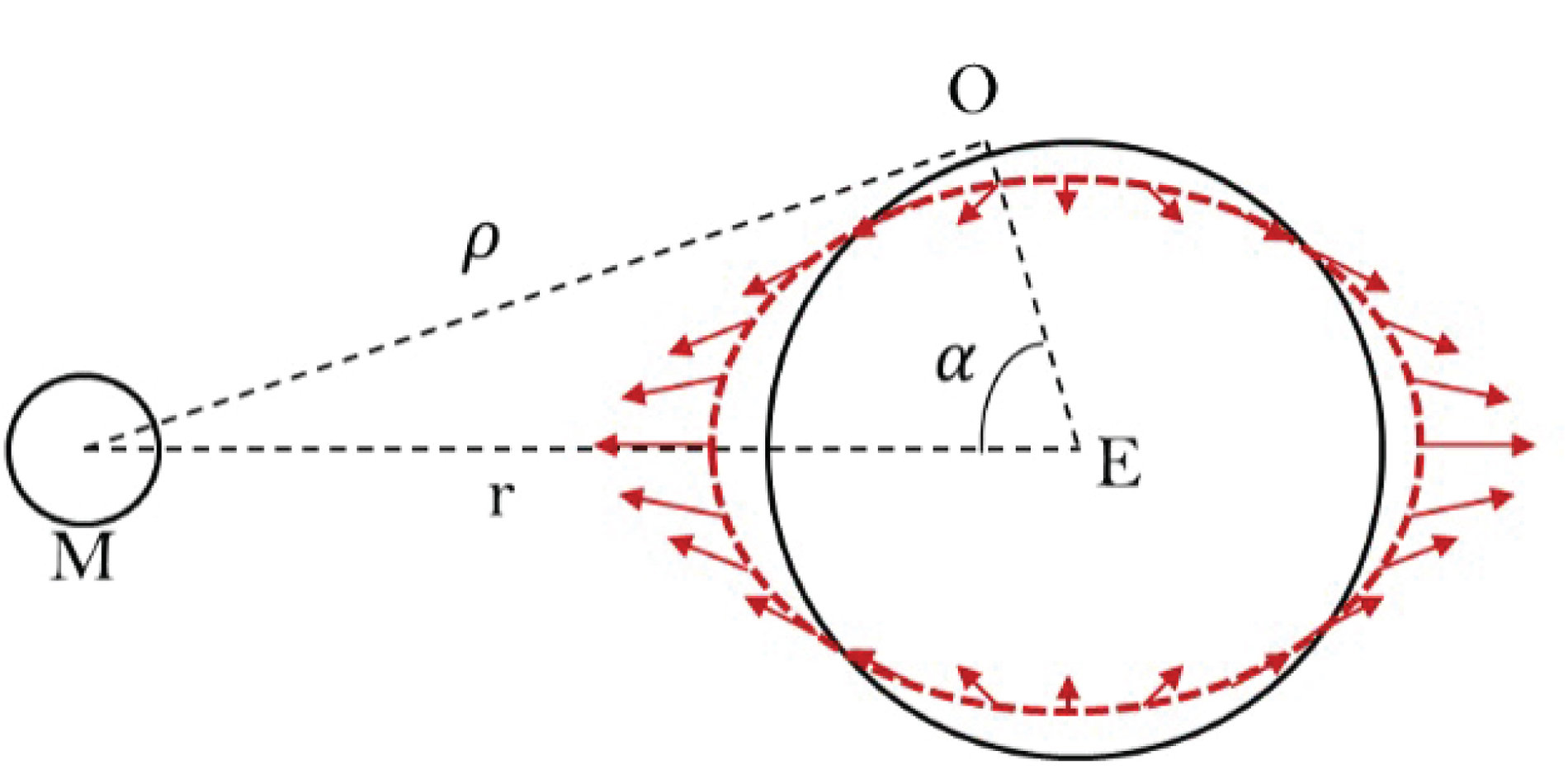Inferring Subsurface Information using Tidal Analysis
Investigator: Xunfeng Lu (PhD student)
The Earth’s surface can be considered a “free surface” acted upon by tidal forces. Natural stresses, such as earth tides, ocean tides, and atmospheric pressure load can deform the surface of the earth. Earth and ocean tides are products of lunar and solar tidal forces. To be specific, earth tides are the displacement of the solid earth’s surface and ocean tides are the periodic oscillations of sea level (see Figure 1). Atmospheric tides are periodic atmosphere pressure oscillations excited by the Sun’s heating, the moon’s gravitational force, and large-scale latent heat release due to deep convection in the tropics.

Figure 1: Moon and Earth system
Earth, ocean, and atmospheric tides are naturally occurring and offer an opportunity to infer subsurface information. The downhole pressure in closed wells or water level in open wells may include periodic signals with dominantly diurnal and semidiurnal periods induced by earth tides, ocean tides, and atmospheric tides (see Figure 2). Using the oscillation signal, reservoir properties can be evaluated by calculating the phase difference and amplitude ratio between the recorded pressure/water level fluctuations and the corresponding theoretical tides.

Figure 2: Periodic signals in water level and atmospheric pressure
The tidal analysis method has three advantages for inferring reservoir properties. Firstly, tidal analysis is a passive method so that the system does not experience any perturbation due to injection or pumping. Secondly, as a passive method, tidal analysis provides a cost-effective way to infer the subsurface information. Finally, continual forcing by the tide provides a good opportunity for long-term monitoring of CO2 plume migration and injected gas properties.
In this project, we have established a system of physical models to relate tidal signal characteristics with reservoir properties. Tidal analysis models have four dimensions of complexity: wellbore deformation, flow transient condition (well configuration), level of heterogeneity, and degree of confinement. The present models (marked with green) and unsolved problems (marked with light blue) are shown in Figure 3. An obvious observation is that there are a lot of unsolved problems of immediate importance to be solved to extend the application of tidal analysis.

Figure 3: Summary of tidal analysis models
One result of our research is shown here (see Figure 4). The degree of reservoir confinement could be inferred once we calculate the amplitude ratio and phase difference between tidal signals included in downhole pressure and theoretical tides. Ssa, Mm, Mf, diurnal part and semidiurnal part are different tidal components that could be found, Table 1. S is skin factor and CD is wellbore storage coefficient and HD is leakage coefficient.

Figure 4: Infer the degree of reservoir confinement through tidal analysis

Table 1: Tidal constituents
